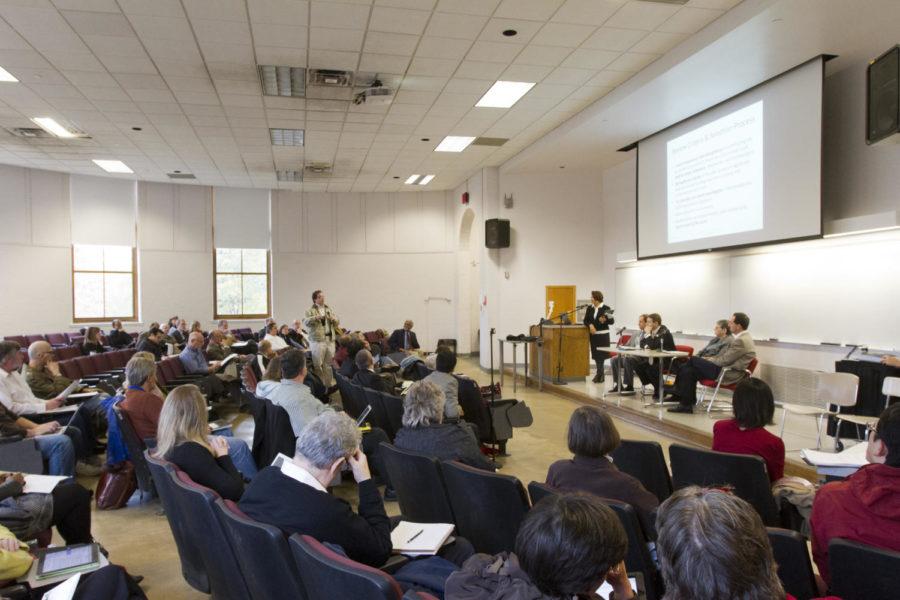Meeting clarifies presidential research initiative
Photo: Megan Wolff/Iowa State Da
An open forum for the new inititive for interdisciplinary research was held Thursday, Oct. 18, in Marston Hall.
October 18, 2012
A rainy day did not delay an important information session held Thursday in 207 Marston Hall. ISU faculty from across the disciplinary spectrum sat in attendance to learn and share ideas regarding President Steven Leath’s recently proposed Presidential Initiative for Interdisciplinary Research.
Tahira Hira, senior policy adviser to the Office of the President, led the discussion along with a panel of four university administrators: Jonathan Wickert, senior vice-president and provost; Miles Lackey, associate vice-president to the Office of the President; Sharron Quisenberry, vice-president for research and economic development; and James Reecy, director of the Office of Biotechnology and professor of animal science.
The first half of the session outlined the request for proposals. These proposals are aimed at securing multi-million dollar contracts and grants for the university. To do this, the initiative encourages faculty from every discipline to form winning research teams.
“[This initiative] is intended to challenge faculty to put together winning teams,” Wickert said. “[We want] the best thought leaders on these research teams.”
Wickert explained resources included in the initiative are intended to be for pursuit funding. This funding is an investment in the faculty to put together teams which will work together to secure winning contract and grant proposals.
An important question was raised concerning the source of money for the pursuit funding. Wickert responded there was a 206 percent increase in state appropriations this spring due to increases in enrollment and research development.
Jennifer Margaret, director of the ISU gerontology program, expressed excitement and interest toward the presidential initiative.
“Inherently, [the gerontology program] is an interdisciplinary program,” Margaret said. “We want to connect with other departments and units to see how we can incorporate life span developmental principles into what folks are already doing to help educate students, and develop technology and create better environments that are aging friendly and sustainable.”
Margaret commented on how the open forum helped answer important questions regarding the program and the steps for moving forward within the process.
“I think it’s a good first step,” Margaret said. “It helped lay out the president’s agenda, which is very reassuring and exciting — to think big and think interdisciplinary. This forum could be the first step in more meetings where faculty get together and we regularly talk about and know more about what we’re doing.”
Hira noted three indicators which showed the forum had fulfilled its purpose. First, there was attendance. Second, Hira and the panel had the opportunity to explain and give further clarification about the program. Finally, the forum allowed the audience to express their ideas and concerns with the initiative, which the university administrators took into account.
“I think it was very good; it brought up a lot of what people were thinking about,” Quisenberry said. “I thought it was a great interchange, and that’s exactly what we wanted.”
Both Hira and Quisenberry said they hope to see more people in attendance at the next forum at 11 a.m. Oct. 26, in the Campanile Room of the Memorial Union.







